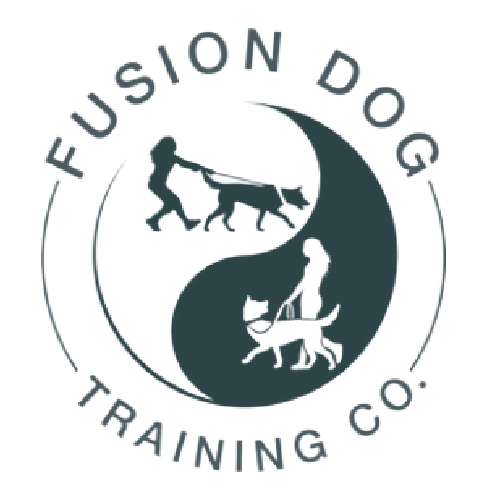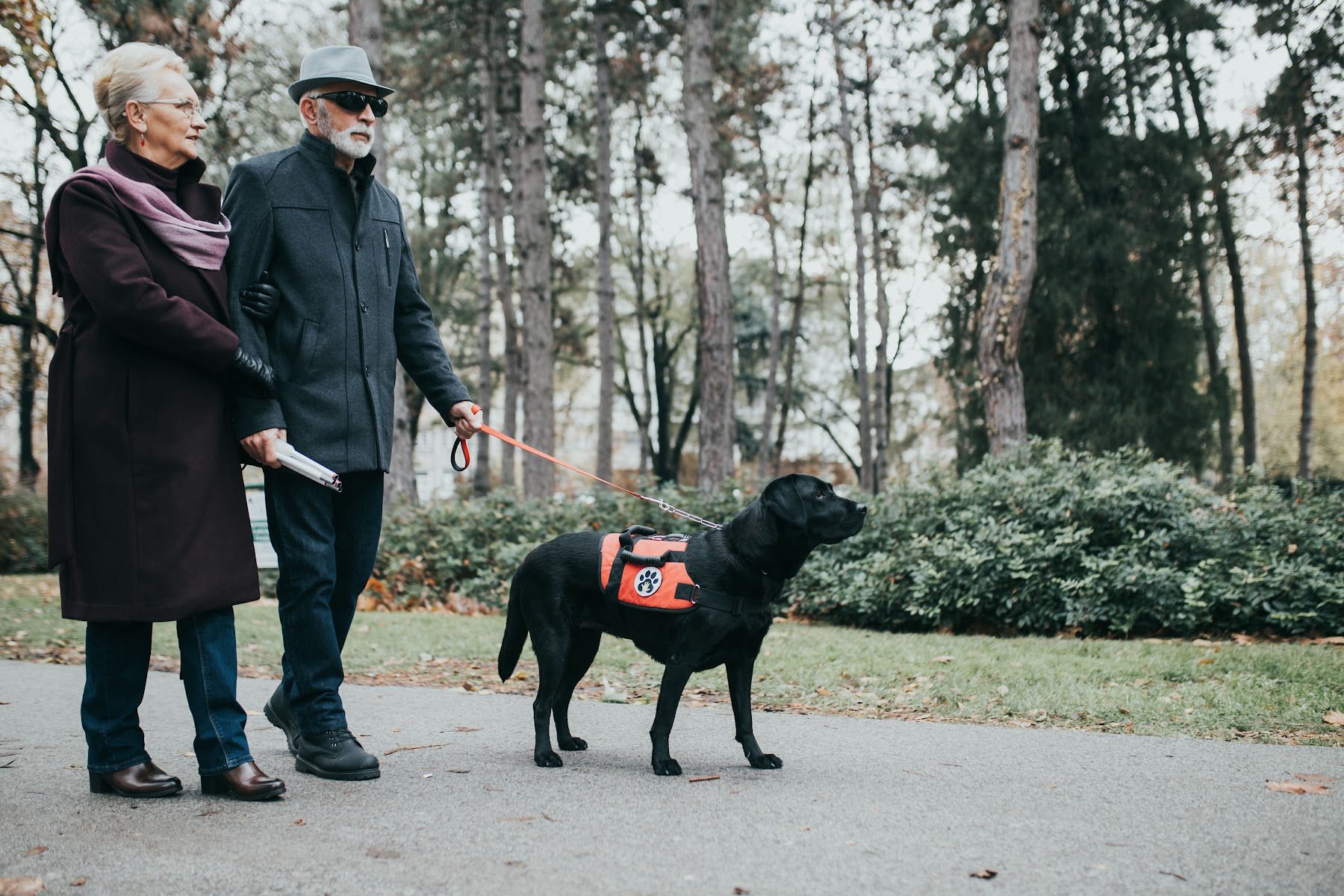How Long Does it Take to Train a Service Dog?
About the Author: As a seasoned dog trainer in Monument, CO, I've helped numerous dog owners establish a strong foundation through effective training methods and practical advice.
Dive into the factors affecting training duration, unravel the qualifications of service dog training, and explore whether you can embark on the rewarding journey of training your own service dog. This insightful article is crafted to enlighten and empower those interested in these exceptional canine companions. Whether you're a potential owner or a curious reader, uncover the essential elements that contribute to the successful training of service dogs.
At Fusion Dog Training Co., we understand the invaluable role that service dogs play in enhancing the lives of individuals with disabilities. These remarkable animals provide not only assistance but also companionship and increased independence, making their presence a true lifeline for many. Given their significant responsibilities, a common question arises: how long does training service dogs take?
The journey to train a companion dog that provides a service is complex and how long it takes varies widely depending on several factors. These include the dog's breed and temperament, the specific tasks they are being trained to perform, and the expertise of the trainers involved. Additionally, the level of involvement and consistency from the owner can significantly impact the training timeline. Our goal is to provide you with a comprehensive understanding of these variables, helping you to appreciate the dedication and time required to develop a fully qualified service canine.
What Is a Service Dog and What Qualifies as Service Dog Training?
A service or support dog is a specially trained canine that assists individuals with disabilities by performing tasks tailored to mitigate the impact of their handlers' disabilities. Unlike emotional support animals, these dogs are not only companions but are vital partners in providing independence and enhancing the quality of life for their handlers.
These dogs are trained - by specialized professional dog trainers - to perform specific tasks that directly relate to their handler's disability. These tasks can include guiding visually impaired individuals, alerting deaf individuals to sounds, pulling a wheelchair, alerting and protecting a person having a seizure, reminding a person with mental illness to take prescribed medications, or offering emotional support. To qualify as service training, the program must focus on these specialized tasks that help the handler navigate daily life with greater ease and safety.
The training process to become a service animal is rigorous and must meet high standards to ensure reliability and effectiveness. This training involves not only the teaching of specific tasks but also conditioning the dog to remain calm and focused in a variety of environments and situations. The standards for service task training include behavioral expectations, such as not reacting aggressively or fearfully, maintaining composure in public settings, and responding promptly to their handler's commands.
It's essential for those involved in the training or ownership of these dogs to comprehend these standards and the significance of such training. Through this understanding, we can better support the integration and acceptance of these dogs in society, recognizing their role as more than just pets, but as essential companions and aides to those who rely on them.
Stages of Training a Service Dog
A. Puppy Socialization and Basic Obedience
The journey to become a service dog is much more than simple potty training or kennel training. An assistance dog candidate begins with puppy socialization and basic obedience, a foundational stage that sets the tone for their future. Early socialization is crucial as it helps puppies become well-adjusted, confident, and adaptable to various environments and situations. During this period, which typically spans several months, we focus on teaching basic commands such as sit, stay, and come. The goal is to establish a reliable foundation of obedience and manners that will be built upon in subsequent training stages.
B. Advanced Training
Once a solid foundation is established, we move to advanced training, where dogs learn specialized tasks tailored to the needs of the individuals they will assist. This phase involves teaching skills like retrieving items, opening doors, or alerting to specific sounds or medical conditions. Our trainers employ a variety of techniques, including positive reinforcement and task-specific exercises, to ensure dogs master these complex skills. The duration of this stage can vary but generally takes several months, depending on the complexity of the tasks and the dog's learning pace.
C. Public Access Training
Public access training is a critical component of service animal development, focusing on behavior and etiquette in diverse public settings. It is essential for dogs to remain calm and focused amidst distractions, ensuring they can safely accompany their handlers anywhere. During this stage, we expose dogs to various environments, including busy streets, public transportation, and crowded venues, to build their confidence and adaptability. The timeline for achieving public access readiness varies, but it typically spans a few months, with assessment criteria based on the dog’s ability to maintain composure and perform tasks reliably in public.
D. Final Evaluation and Certification
The final step is evaluation and certification, where service or therapy dogs undergo rigorous testing to ensure they meet the highest standards of performance. This process involves assessing their ability to perform specific tasks, respond to commands, and maintain appropriate behavior in various situations. Achieving certification requires a significant time commitment, as dogs must consistently demonstrate proficiency across all required skills. This stage culminates in a formal assessment, where only those meeting the stringent criteria are certified as service animals.
Factors Influencing Training Duration for Types of Service Dogs
While Fusion Dog Training Co. does not specialize in training these types dogs, we are dedicated to providing valuable insights into the factors that can influence the duration of the training. Understanding these elements is crucial for anyone considering this rewarding but challenging journey.
A. Puppy Breed and Temperament
The breed and personality of a dog significantly affect the pace and success of training. Certain breeds are naturally suited for service roles due to their intelligence, willingness to work, and stable temperaments. Breeds like Labrador Retrievers and Golden Retrievers are often chosen for their trainability and gentle nature. However, each dog's individual personality can vary, requiring trainers to adapt their methods to meet the unique needs of each dog. This adaptability is essential, as some dogs may take longer to learn certain skills.
B. Health and Physical Condition
A dog's health and physical condition are vital to their training progress. Dogs in robust health, free from medical issues, generally progress more swiftly as they can participate fully in training exercises. Conversely, dogs with health concerns may need customized training plans, potentially extending the time needed to achieve proficiency. Regular veterinary care is crucial to address any health issues that may impact training effectiveness.
C. Trainer Expertise and Experience
The expertise and experience of the individual offering the training are critical in influencing the training timeline. Highly skilled individuals, well-versed in various training methodologies, can tailor their techniques to suit each dog's learning style, thereby enhancing the efficiency of the training process. They employ evidence-based strategies to optimize learning outcomes, ensuring that dogs receive the necessary support to excel in their service roles.
D. Owner Involvement and Consistency
The role of the owner is pivotal in reinforcing professional training. Consistency and involvement in the training process at home are crucial, as they help solidify the behaviors and tasks learned. Active participation by owners during training sessions and regular practice of these skills strengthen the bond between the dog and handler, thereby improving the dog’s performance and reliability in service.
E. Type of Service Required (Ex. Psychiatric Service Dog vs. Guide Dogs or Hearing Dogs, etc.)
The specific type of service the dog is being trained to provide greatly impacts how long training your dog takes. Tasks such as mobility assistance or medical alerting require intricate skill sets and extensive practice, which can extend the training timeline. Simpler tasks may result in quicker readiness. Customizing the training approach to fit the specific service needs ensures that each dog is well-equipped to fulfill their role effectively.
By considering these factors, individuals can better understand the commitment required to train a service dog, ensuring that all parties involved are prepared for the journey ahead. Fusion Dog Training Co. strives to offer guidance and support through this informative process, helping prospective owners make informed decisions.
Can You Train Your Own Dog in Service?
Training a service canine requires a significant investment of time and effort. It is a process that demands dedication, patience, and a deep understanding of dog behavior and training techniques. Owners must be equipped with the skills necessary to teach their dogs the specific tasks and behaviors required of them. This includes not only task-specific training but also ensuring that the owner-trained dog is well-mannered and capable of handling a variety of public environments without becoming distracted or reactive.
One of the major challenges of self-training a service canine is maintaining consistency and structure in the training regimen. Unlike professional trainers who have extensive experience and resources, individual owners need to develop a comprehensive training plan and stick to it rigorously. This requires a strong commitment to daily training sessions and an ability to troubleshoot and adapt training methods as needed.
While self-training can be rewarding, it also presents potential drawbacks. The lack of professional guidance might lead to gaps in the dog’s training, and it can be difficult to objectively assess the dog’s readiness for the responsibilities of service work. Additionally, self-trained dogs may not meet the same level of standards as those trained by professionals, which can impact their effectiveness and access rights.
However, for those who are committed and willing to invest the necessary time and resources, training your dog can also be deeply fulfilling. It allows for a strong bond to develop between the dog and handler, as you work with your dog throughout the process. This partnership can lead to a more personalized training experience, tailored specifically to the handler’s needs.
Ultimately, whether to self-train a service canine is a decision that should be made carefully, considering both the benefits and challenges. At Fusion Dog Training Co., we encourage potential owners to thoroughly research what it takes to fully train one of these dogs and assess their own abilities and resources before embarking on this journey, and seek professional guidance when needed to ensure the best outcomes for both the dog and handler.
Final Thoughts: How Long Does it Take to Train a Service Dog?
In summary, while Fusion Dog Training Co. may not train these animals directly, we understand the typical timeline can take several months to a few years to train a dog. This duration depends on multiple factors such as breed, temperament, health, and the specific tasks the dog needs to perform. Each dog is unique, with individual learning curves that can significantly influence the time required to become a fully certified service dog.
We encourage potential owners and trainers to approach this training program journey with patience and dedication. Training a service animal is a demanding yet immensely rewarding process that requires commitment and perseverance. The bond formed between a service companion and their handler can transform lives, providing unparalleled support and companionship. As you embark on this journey, remember that every step forward brings you closer to achieving a profound and life-changing partnership.





